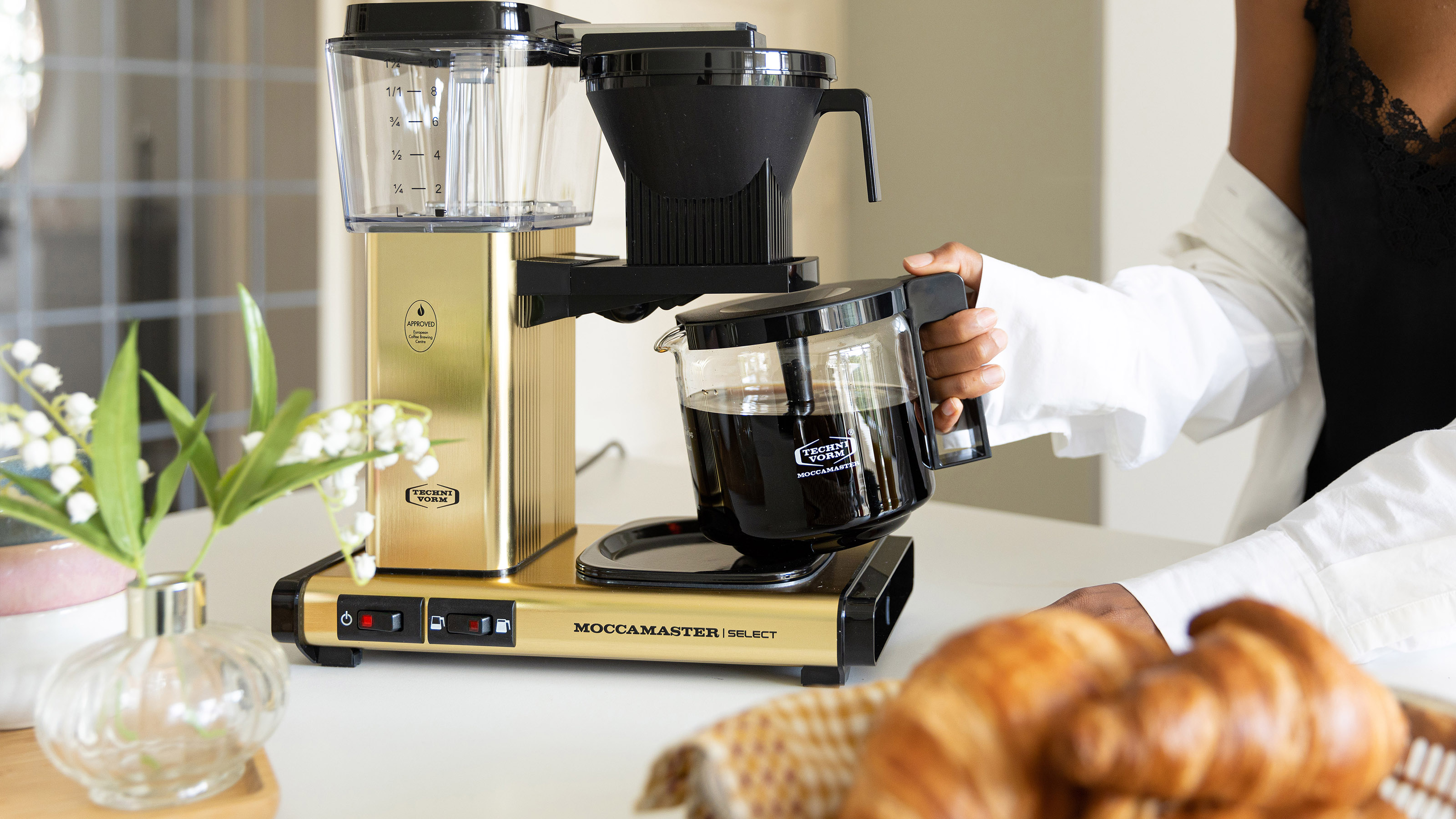
If you brew your own drinks at home, knowing how to clean a coffee machine is essential. Like it or not, icky residue can build up in the machine so cleaning it will ensure your drinks taste consistently good and your coffee maker lasts longer.
Whichever is the best coffee machine for you — barista-style, pod, or filter — there’s a cleaning and maintenance regime you should follow so it keeps delivering your favorite drinks.
Sounds like hard work? It really isn’t, and our step-by-step guide will prove that it’s a simple procedure. As for how often to do the job, how to descale, and what to do if you want to deep clean your capsule machine, filter coffee machine, or barista coffee machine, the answers are right here along with tips from the experts.
Good to know
Time: 10–20 minutes
Difficulty: Easy
Helpful tips: The instructions for cleaning a coffee maker depends on the type of machine you have. But there are some general guidelines every coffee maker owner should know, plus we’ve got the lowdown on the specific care different designs need. Here, we've gone into detail on how to clean the Technivorm Moccamaster. But you should be able to find specific instructions from your manufacturer either with your machine or online.
Here's what you'll need
- Clean lint-free microfiber cloths or a dishcloth
- Dish soap — I like Ecover, available on Amazon
- A sponge or washing-up brush — a Dishmatic will be your BFF!
- Pin or needle (for espresso machine)
- Descaler — this Impresa product has over 67,000 highly-rated reviews on Amazon
How to clean a coffee maker
Figuring out how to clean a coffee machine correctly depends on its type, whether you have a pod machine or one of the best filter coffee machines. However, there are steps you need to follow that each have in common.
Step 1: Switch your machine off and wait for it to cool
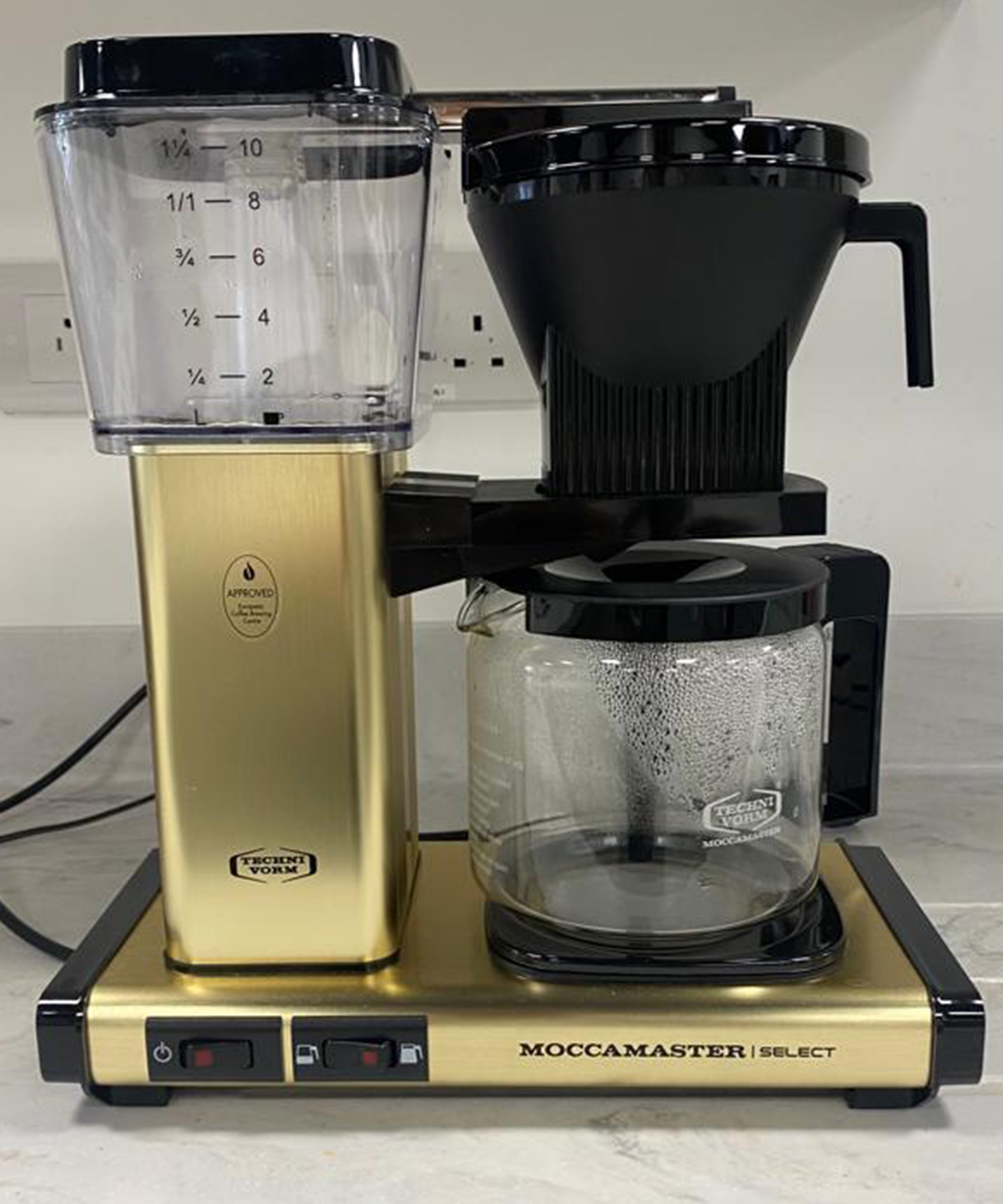
Technivorm Moccamaster Select in gold on modern marble-effect countertop
Turn off your machine and unplug it from the wall. This'll ensure it's safe to touch and you won't burn yourself when cleaning it. Use this time to enjoy your coffee.
Step 2: Wipe the exterior of the coffee machine
Step two is to give the outside of your coffee machine a wipe with a clean microfiber cloth. If your coffee maker also has an external coffee outlet and hot plate, you can also wipe these as well. (Just make sure that the hot plate is cool before you touch it, otherwise, you could end up burning yourself.)
Step 3: Pop your used coffee grounds in the trash
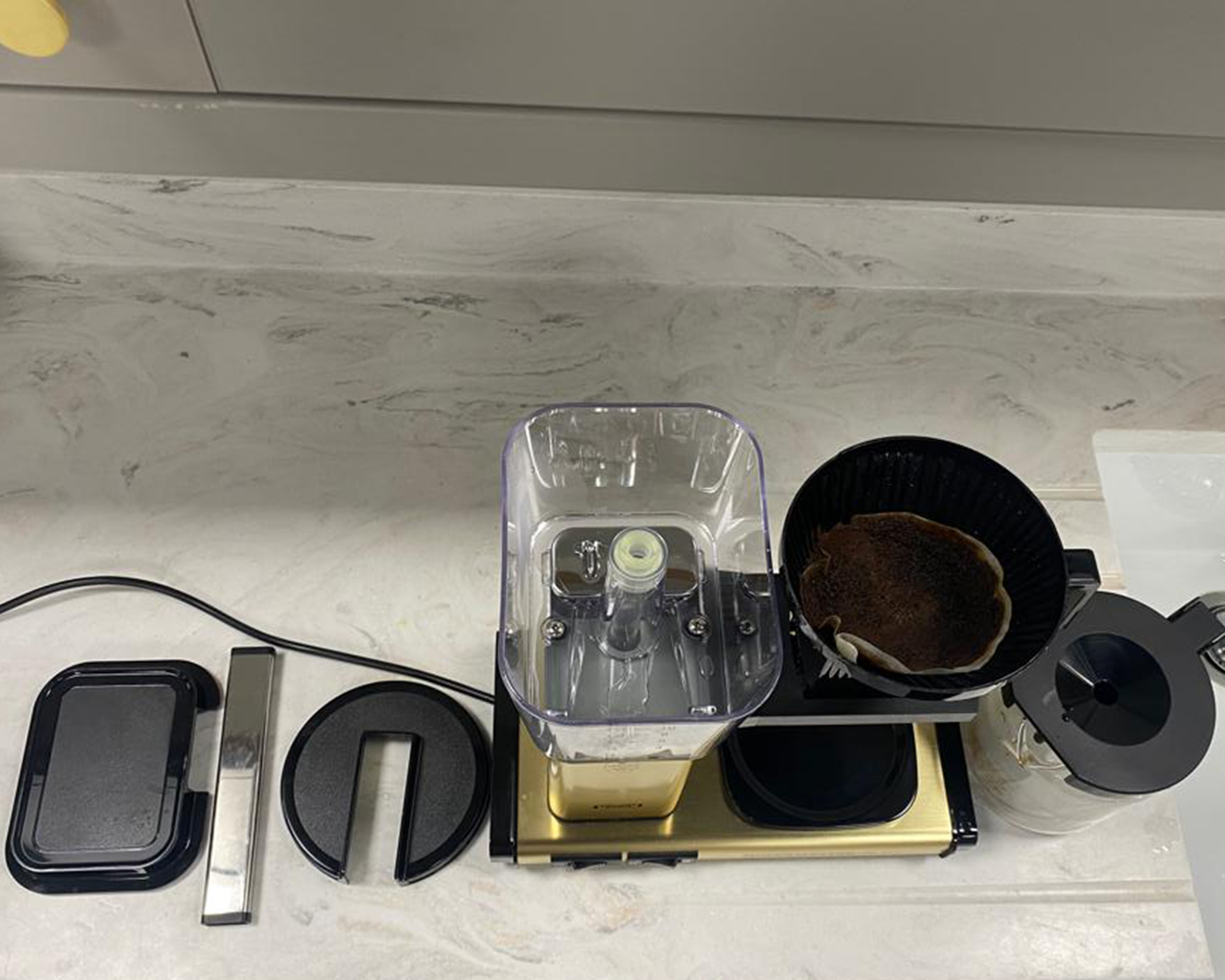
A Technivorm Moccamaster Select on deconstructed on marble kitchen countertop
To do this, remove the filter basket, and filter holder lid to access the (now soggy) filter paper.
WARNING: Be careful when lifting this out to ensure you don't stain your clothes. Refer to our stain removal guide if you're unlucky!
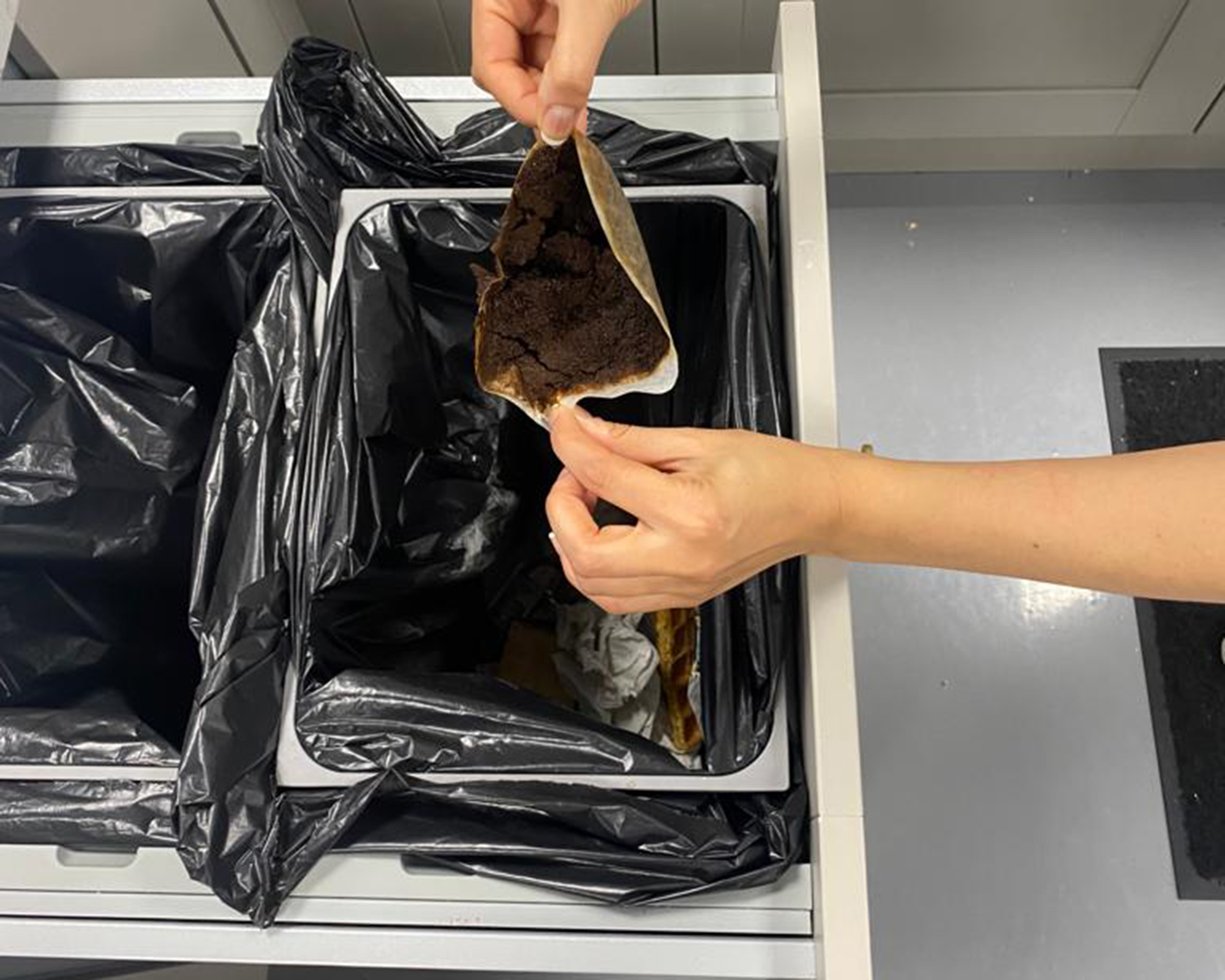
Christina Chrysostomou disposing of spent coffee grounds in trash
Alternatively, add the grounds to your food waste bin for composting or save your coffee grounds to clean your kitchen.
Step 4: Wash all the removable parts of your coffee machine

Technivorm Moccamaster Select with components removed
Next, remove all the removable parts of your coffee machine and wash them in a bowl of hot soapy water — or, if they're dishwasher proof, pop them in the dishwasher for a deeper clean.
In terms of what's removable, for a pod coffee machine, this can include the drip tray and capsule holder; for an espresso machine, the water tank, drip tray, and grid; and for a barista coffee machine, the bean container, water tank, drip tray, filter baskets, and the portafilter.
Always check the instructions that came with your coffee machine.
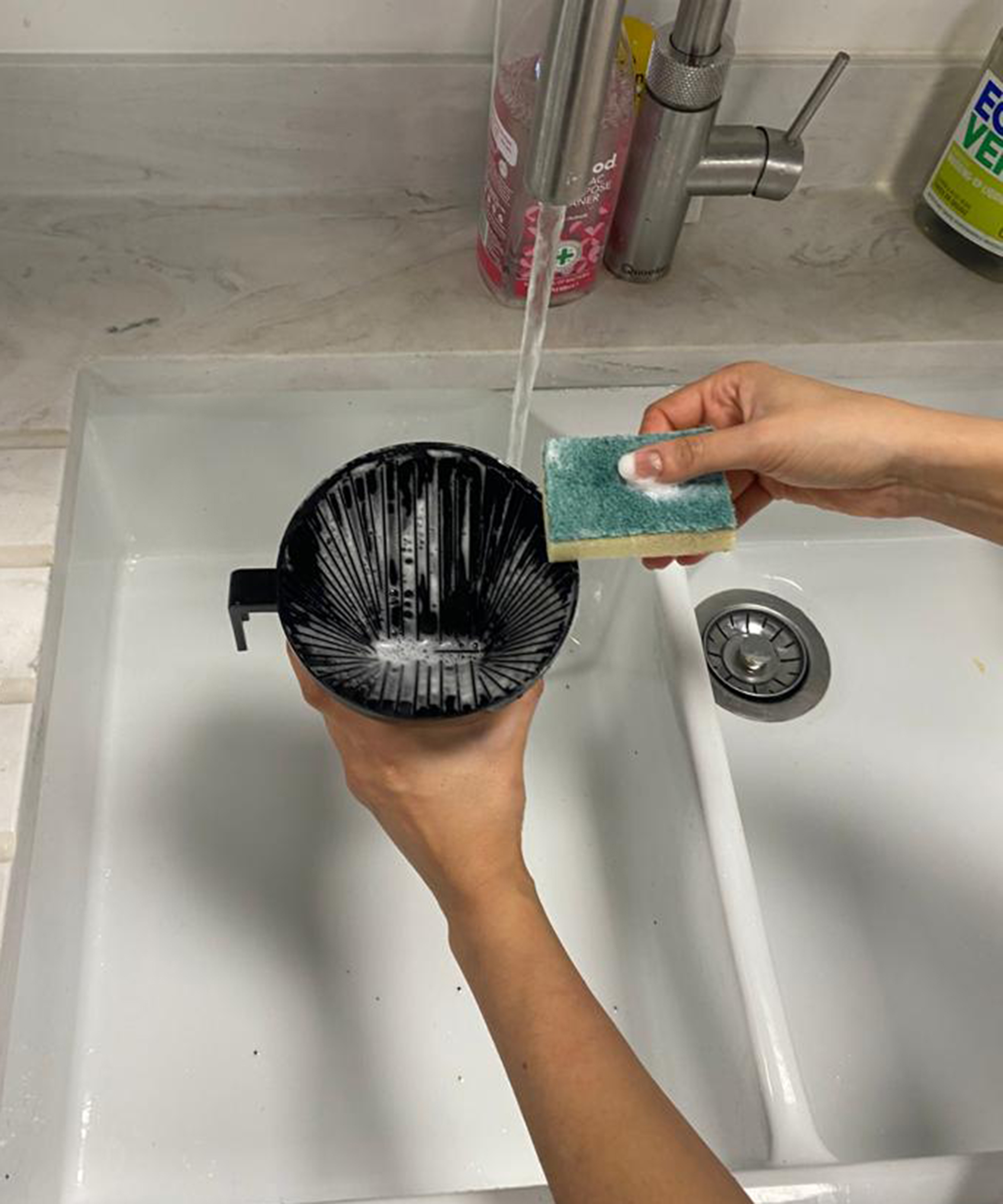
Christina Chrysostomou cleaning the Technivorm Moccamaster Select filter basket in sink with Ecover dish soap and sponge
You should also wash the brew basket, brew basket lid, nine-hole coffee outlet arm, cold water reservoir lid, and glass carafe. I could've popped everything (bar the glass carafe) in the dishwasher, but decided to handwash them. Always check the instructions that came with your coffee maker.
For a single-serve coffee maker (ie: a Nespresso coffee maker or Keurig coffee maker), this can include the drip tray and capsule holder; for an espresso machine, the water tank, drip tray, and grid; for a barista coffee machine, the bean container, water tank, drip tray, filter baskets, and the portafilter.
WARNING: Though the glass carafe is relatively heatproof — it is fragile. So be sure to take care to avoid it slipping out of your hands and shattering. If helpful, remove the plastic lid and lever so that you can have a better grip on it in the sink.
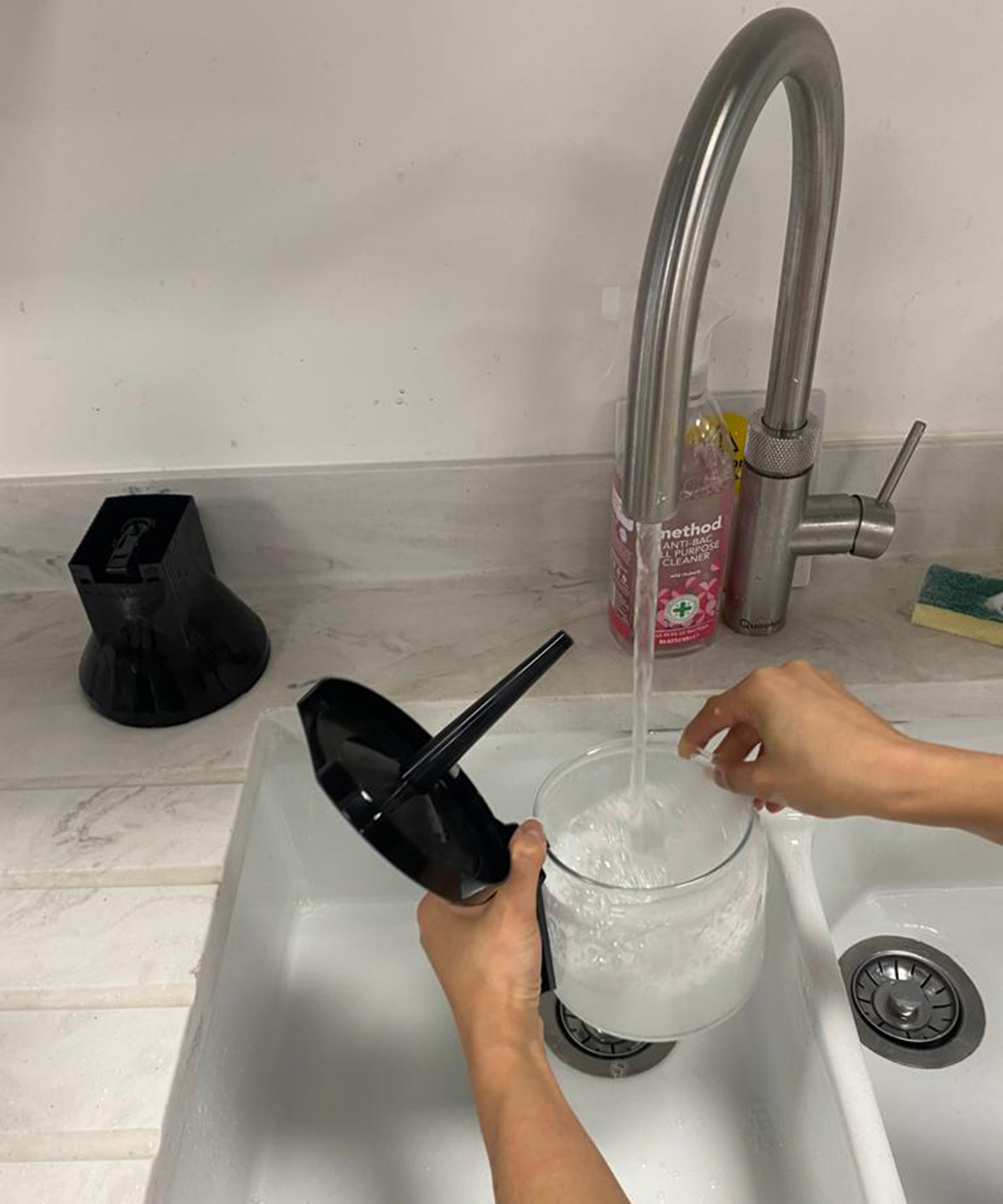
Christina Chrysostomou handwashing Technivorm Moccamaster Select glass coffee carafe
Step 5: Dry everything that's been cleaned
Once all the removable parts of your coffee machine have been cleaned, the next step is to dry them off using a clean piece of paper towel, before replacing them.
Step 6: Clean the steam wand (if applicable)
If your bean-to-cup coffee maker or espresso machine with a built-in milk frother has a steam wand, you'll likely clean it after each use. It'll likely need a deeper clean every couple of uses, too. To deep clean your milk frother, fill a jug with boiling water and rest the milk frother in there for five minutes. Then, run a shot of steam through it and wipe the exterior with a damp cloth.
Step 7: Descale your coffee maker
For a barista-grade machine, periodic cleaning using a suitable cleaning tablet according to your machine's instructions will remove coffee oils and any residue.
To give the inside of the coffee machine a clean and to descale the pipes, the next step is to fill the water tank with white vinegar (checking the manufacturer's instructions first) and run the vinegar through the coffee machine. This should help to remove any dirt, grime, or debris from the inside of the pipes.
You can also use a special cleaner or descaler. "Using a liquid coffee machine cleaner, run a clean cycle with the cleaner and hot water," says Lauren Bowen, director of franchise operations for Two Maids & A Mop. "Repeat as needed and then run a cycle with plain, hot water. Remove and rinse the drip tray, filter, and other parts. Dry thoroughly."

Type: Tablets
Size: 3 tabs (1.6 oz each)
The perfect prescription for a poorly-functioning coffee maker, these tablets will get rid of rancid coffee oils and get your machine back to good condition.
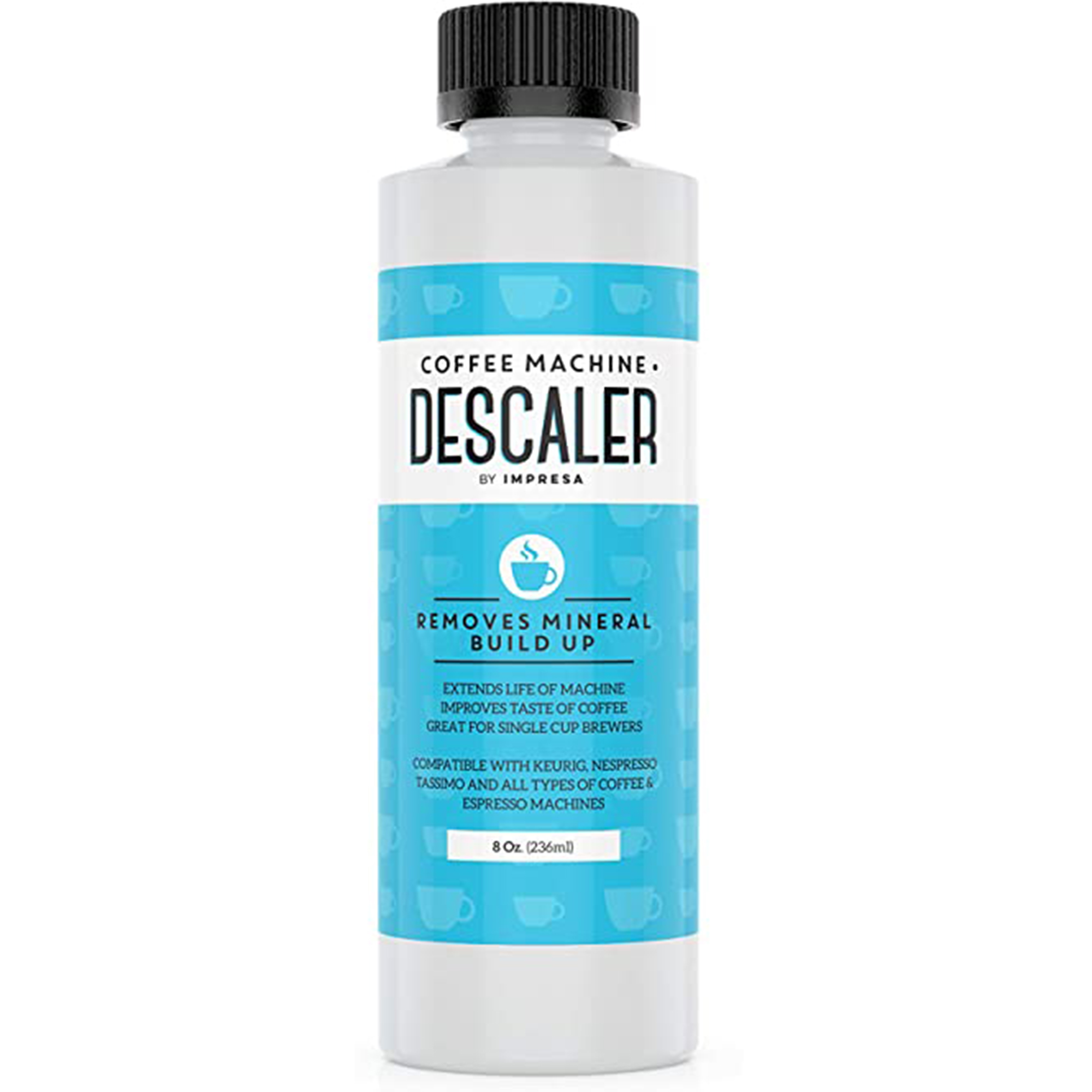
Type: Liquid
Size: 8 fl. oz.
This coffee machine descaling solution (enough for two uses) is highly rated by Amazon customers. With over 67,000 4.4-star reviews it'll get your Keurig, Nespresso, Delonghi, and other single-serve coffee makers squeaky clean inside.
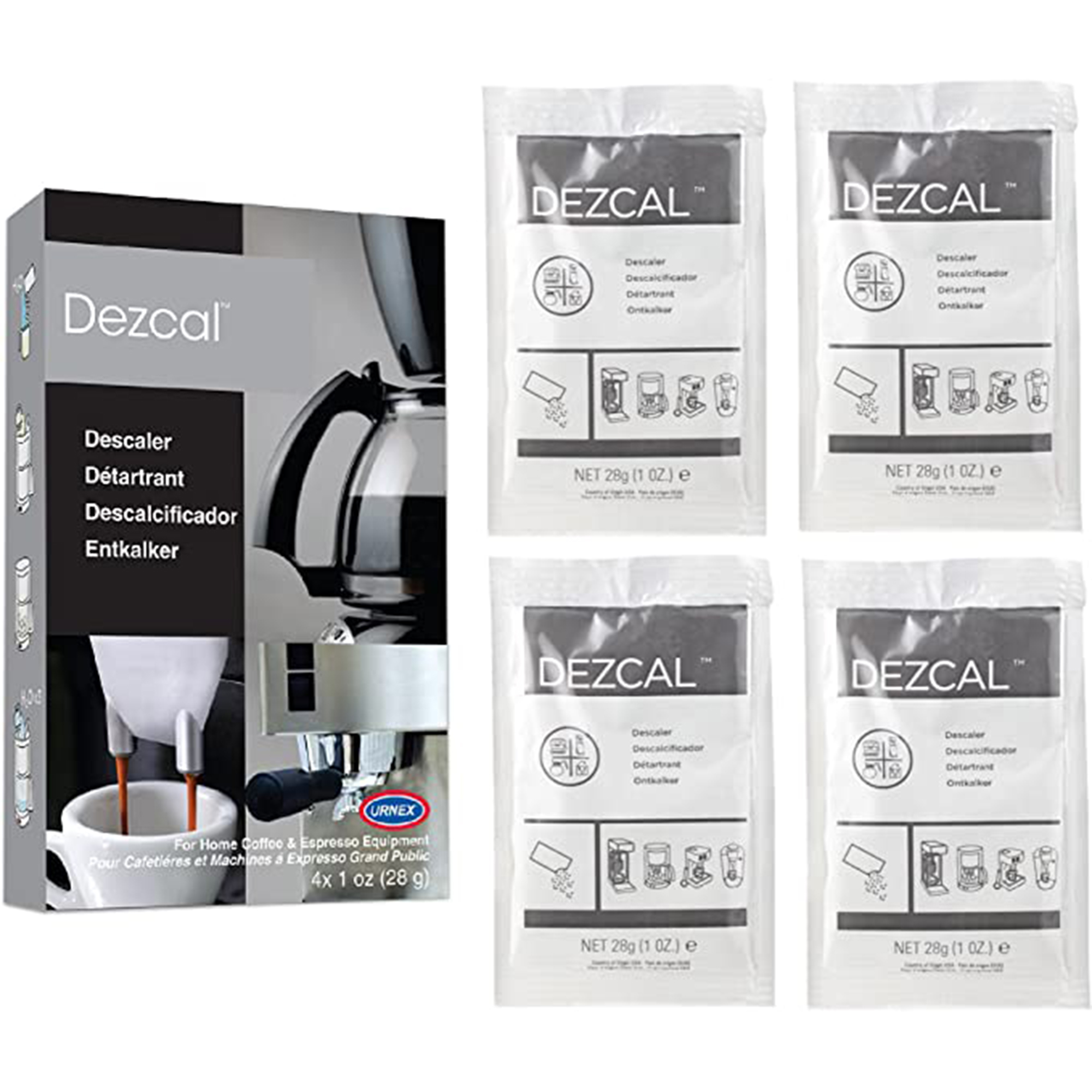
Type: Powder
Size: 4x 1-oz sachets
Prefer to work with easy-to-use pouches? These single-use packets are compatible with Keurig machines, as well as Nespresso, Breville, Jura, Delonghi, and other drip coffee makers, espresso machines, and even electric kettles.
FAQs
What is the best way to clean a coffee maker?
The type of coffee maker you own will dictate the best way to clean it.
Capsule coffee machines are the most straightforward to clean because of their design. Apart from following the steps above, check the manual that came with it, or find it online, and look for any manufacturer’s instructions on cleaning your capsule machine internally.
"One part of capsule/pod machines that is often neglected is the pod bay itself," says Shabbir Nooruddin, coffee blogger at Coffee Brewster. "With the coffee maker unplugged, use a damp towel to clean the needle and inside of the pod bay to remove any coffee residue that may be ruining the taste."
Owner of a barista machine? "It’s a good idea to clean the shower screen after every shot," says Asser Christensen, founder of The Coffee Chronicler. "Just run a bit of hot water through the group head while using a nylon brush on the screen to get rid of any grounds that might be left. Next, the portafilter and basket can be washed with running water and a sponge after each use."
How often should you clean your coffee maker?
For a fresh cup of joe every time, cleaning your coffee maker after every use is important, and you can use the steps in our guide.
If your daily brew ever tastes bitter, burnt, or just a little bit off, it’s time to show your maker a little extra TLC and give it a deep clean, as below. Your machine will also tell you if it needs a bath if the coffee it produces takes longer than normal, or if the finished results are more tepid than piping hot.
Descaling your machine periodically is also important. "Descaling should be done every quarter or more frequently," advises Asser Christensen. "However, it’s hard to give any fixed rules since it also depends on the hardness of the water you use and the type and brand of espresso machine you have." Descaling will be necessary for other types of coffee maker, too, and you’ll find details below.
How should you clean a pod coffee machine?
Pod coffee machines are the most straightforward to clean because of their design. Apart from following the steps above, check the manual that came with it, or find it online, and look for any manufacturer’s instructions on cleaning your capsule machine internally.
How do you deep clean a coffee maker?
Aside from your daily cleaning, knowing how to clean a coffee maker means being aware of the tasks you need to do less frequently but still regularly to give it a deep clean.
"Once a month, remove the water reservoir if applicable and wash it with soap and water," advises Nooruddin. "Also, run a cycle through your coffee maker without any coffee to push hot water through the whole thing."
How to descale a coffee maker
Descaling a coffee maker will likely be necessary every four to six months but, as we’ve said, it does depend on the water in your area as well as the model. "Descale your coffee maker using a descaling solution," says Nooruddin. "This can be bought from the manufacturer or just a tablespoon of citric acid powder mixed into a gallon of water. This helps remove any limescale build-up from the insides of your machine."
The best way to clean a specialized machine like a Nespresso capsule coffee maker is to purchase the manufacturer's descaling kit.
First, remove any loose parts and clean them in hot, soapy water. Reassemble your machine, and pour fresh water into the water container, adding a sachet of the descaling solution. Place a large container under your maker and turn the machine on.
To start descaling, you'll need to press the option for your specific machine. For the popular Inissia, Citiz, and Pixie press the two flashing buttons at the same time and hold for three seconds. From there, the machine will do all the work for the next 10 minutes or so.
Once the machine has cycled through, refill the tank with fresh water and repeat the process. Exit the descaling mode by pressing the same buttons that initiated the process.
Owner of another type of coffee maker? "The process is basically the same, whether you have an espresso machine, drip coffee maker, or pod machine," says James Hyslop of The Coffee Folk.
How do you clean a coffee maker with vinegar and baking soda?
Vinegar is sometimes used to descale and therefore clean a coffee maker of mineral build-up. Be aware, though that this isn’t always recommended. For example, Moccamaster's site warns that using this eco-friendly cleaner can leave an unpleasant taste, or cause issues with the mechanical parts.
"If you read your machine’s user manual, you’ll see that most manufacturers will advise that you should not descale your brewer with vinegar," says Michael Conti of My Morning Espresso."White vinegar contains 5 to 8% acetic acid. This specific type of acid can wear down the metal and cause your machine to leak. As a result, using vinegar to clean your machine can void the warranty. Instead, you can buy an inexpensive solution that uses safer citric acids to clean your machine."
However, if your machine’s manual doesn’t advise against it, one of the most popular ways to clean a basic drip coffee maker is with vinegar. And it’s pretty easy. Just fill your reservoir halfway with white distilled vinegar and top it off with water. The solution will sanitize your carafe and break down any mineral deposits that may have built up in the machine. (For particularly tough build-up, you can increase the amount of vinegar in the ratio.)
Add a coffee filter to your basket as normal, and turn on your machine. Let it brew until the carafe is about halfway full, then turn it off and let the vinegar mixture soak for about an hour.
Once the time has passed, turn on the coffee maker again and let it finish its cycle. Pour out the vinegar solution and refill the carafe with only water. Replace the filter, pour the water into the reservoir, and run another cycle to clear away any remaining vinegar taste or smell.
When it’s done, give your carafe a quick wash with soap and water and your machine is clean for tomorrow morning’s cup of joe!
Don't have vinegar on hand? Cleaning with baking soda can be just as effective but do check the manual. Like it does for your fridge or mildewed linens, baking soda is great at eliminating odors in your coffee maker.
Fill your carafe with warm water and add a quarter cup of baking soda. Mix together until the powder is dissolved, then pour into your reservoir and run a regular brew cycle. (Clumpy bits of baking soda could clog your machine even more.)
You can also use the baking soda residue to scrub your carafe. Once everything is done, run an additional brew cycle with water only.
Join our newsletter
Get small space home decor ideas, celeb inspiration, DIY tips and more, straight to your inbox!

Hi! I’m Beth Mahoney and I’m a former staff writer at Real Homes. I’ve been a journalist for the national press for the past six years, specializing in commerce and trends-related lifestyle articles, from product reviews and listicles to guides and features. With an eye for pretty things (think: quirky wall prints, scalloped edge furniture, and decadent-looking tableware) but a limited budget, I love nothing more than a bargain buy.
-

 Shark Cordless Detect Pro Auto-Empty System Vacuum Cleaner Review
Shark Cordless Detect Pro Auto-Empty System Vacuum Cleaner ReviewOur contributing editor reviews the Shark Cordless Detect Pro Auto-Empty System Vacuum Cleaner
By Paige Cerulli
-
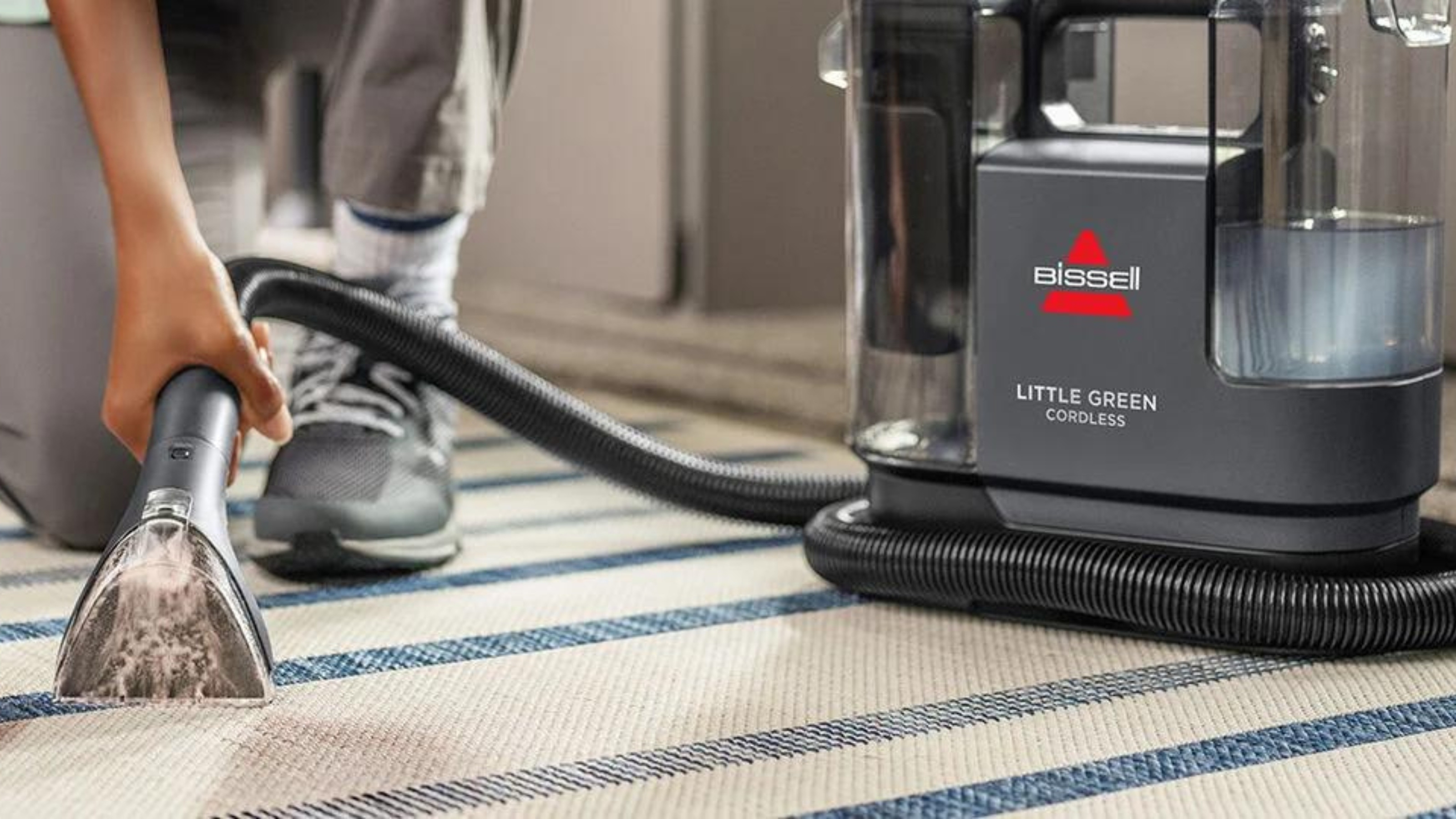
 Bissell Little Green Cordless Portable Carpet Cleaner review — stain removal power in a compact package
Bissell Little Green Cordless Portable Carpet Cleaner review — stain removal power in a compact packageOur contributing editor tests the Bissell Little Green Cordless Portable Carpet Cleaner in her home
By Paige Cerulli
-
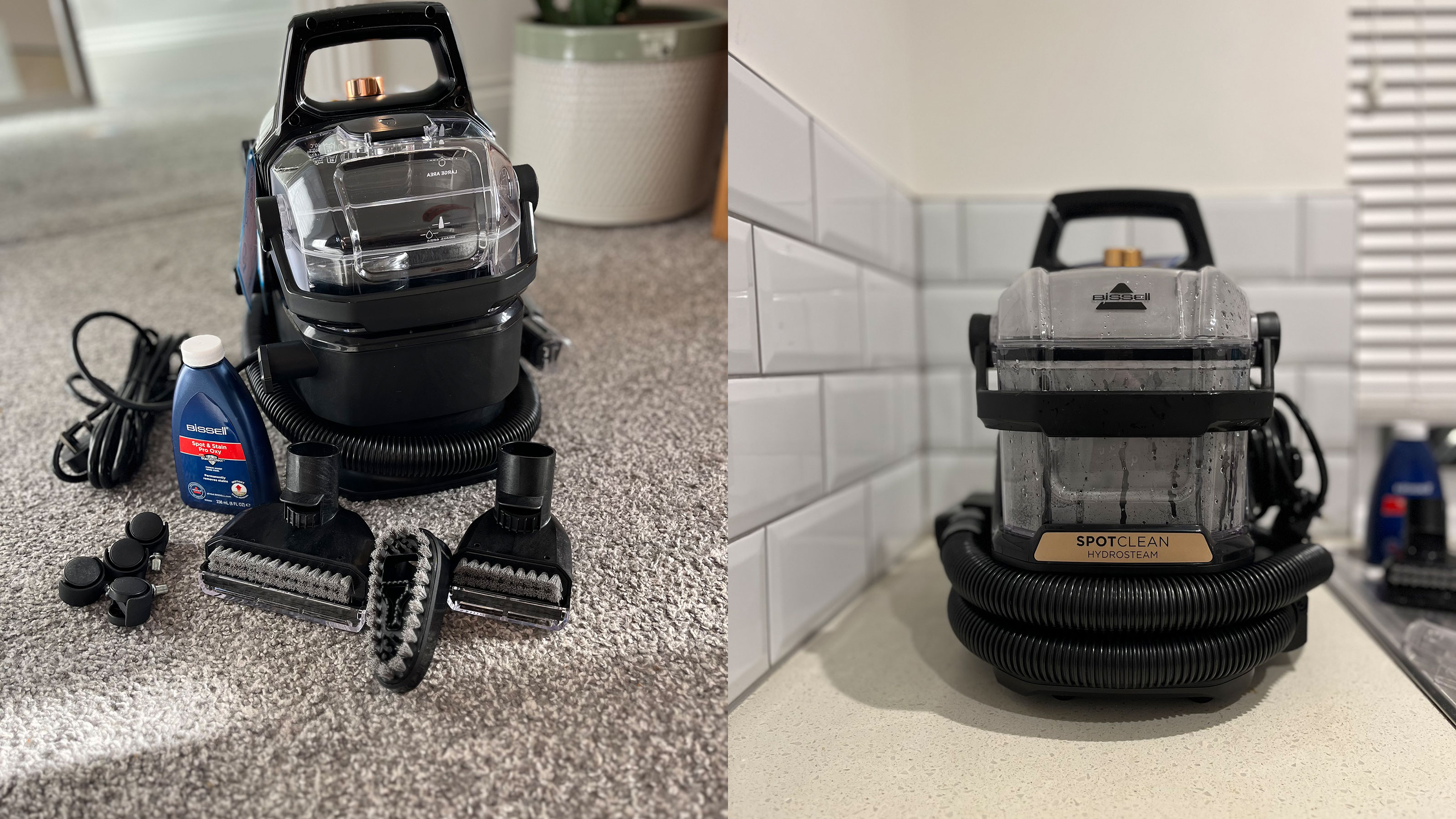 Bissell Little Green HydroSteam Pet Portable Carpet Cleaner review
Bissell Little Green HydroSteam Pet Portable Carpet Cleaner reviewAn assessment of the Bissell Little Green HydroSteam Pet Portable Carpet Cleaner review by contributing and former deputy editor Camille Debuis-Welch.
By Camille Dubuis-Welch
-
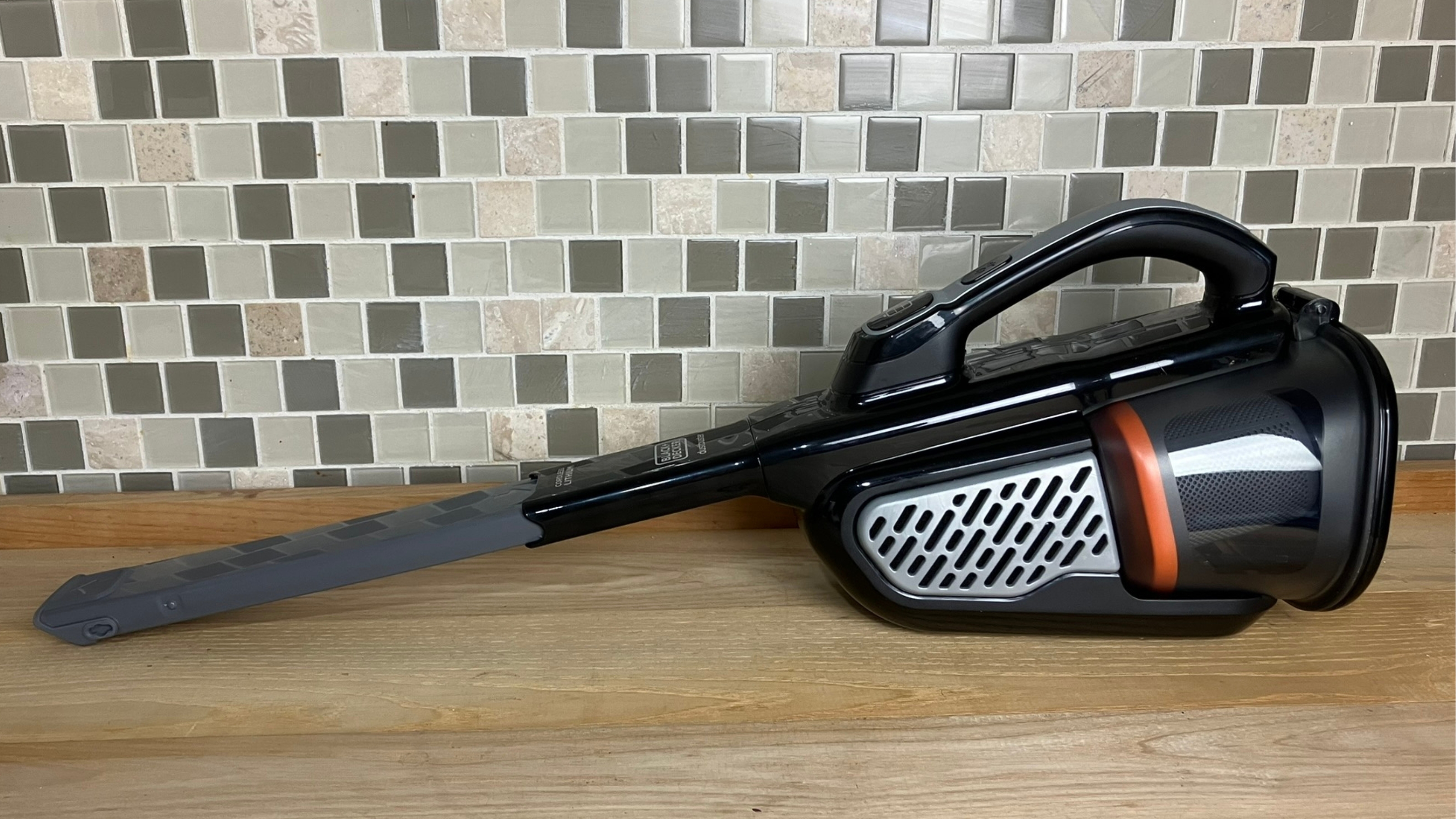
 Black and Decker Dustbuster AdvancedClean+ Cordless Hand Vacuum review
Black and Decker Dustbuster AdvancedClean+ Cordless Hand Vacuum reviewContributing editor, Paige Cerulli tests the Black and Decker Dustbuster AdvancedClean+ Cordless Hand Vacuum in and around her Western Massachusetts-based home
By Paige Cerulli
-
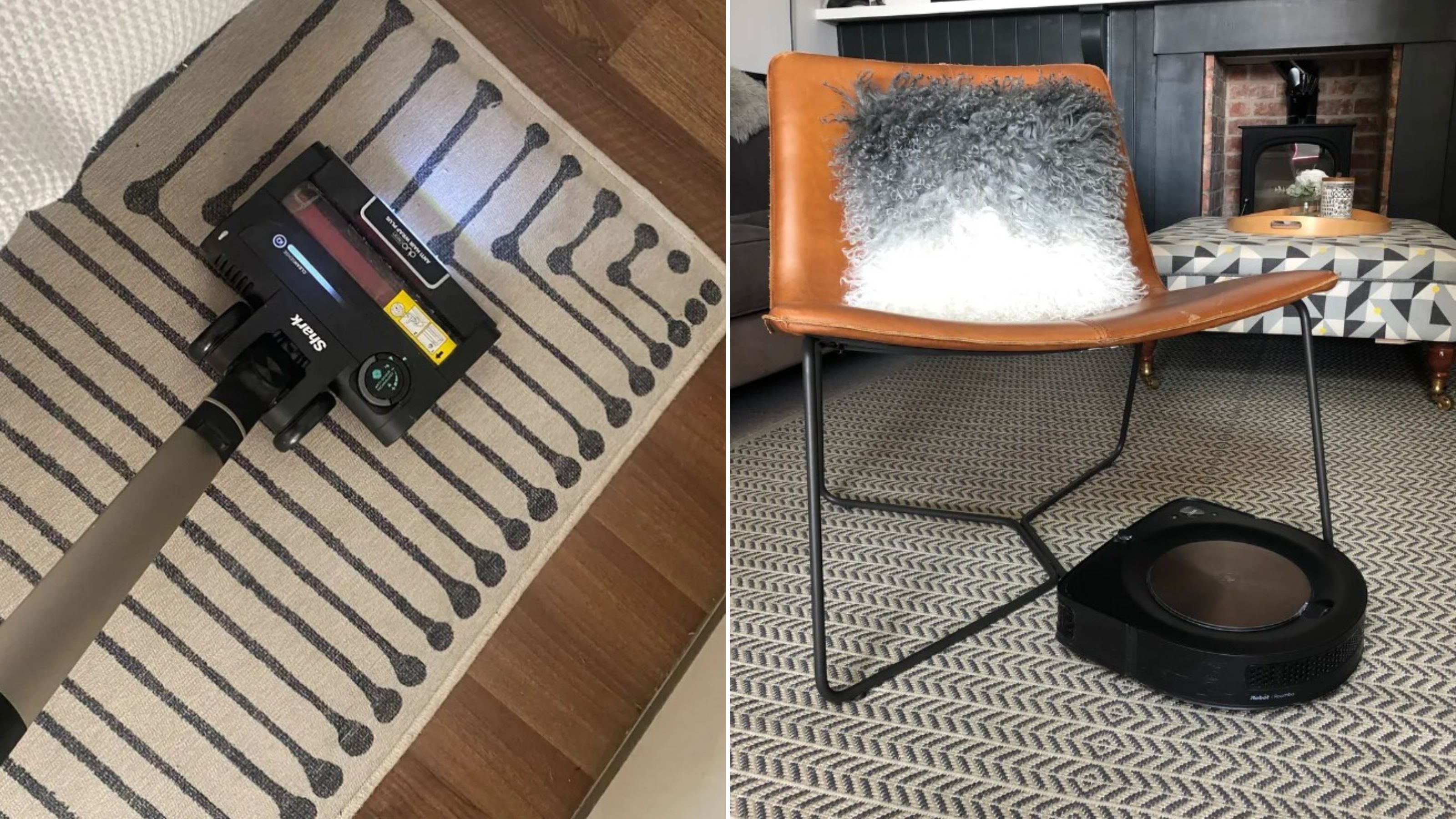 How we test vacuum cleaners
How we test vacuum cleanersAn in-depth explanation of our vacuum cleaner testing process, including tasks the team carries out to review these appliances
By Eve Smallman
-
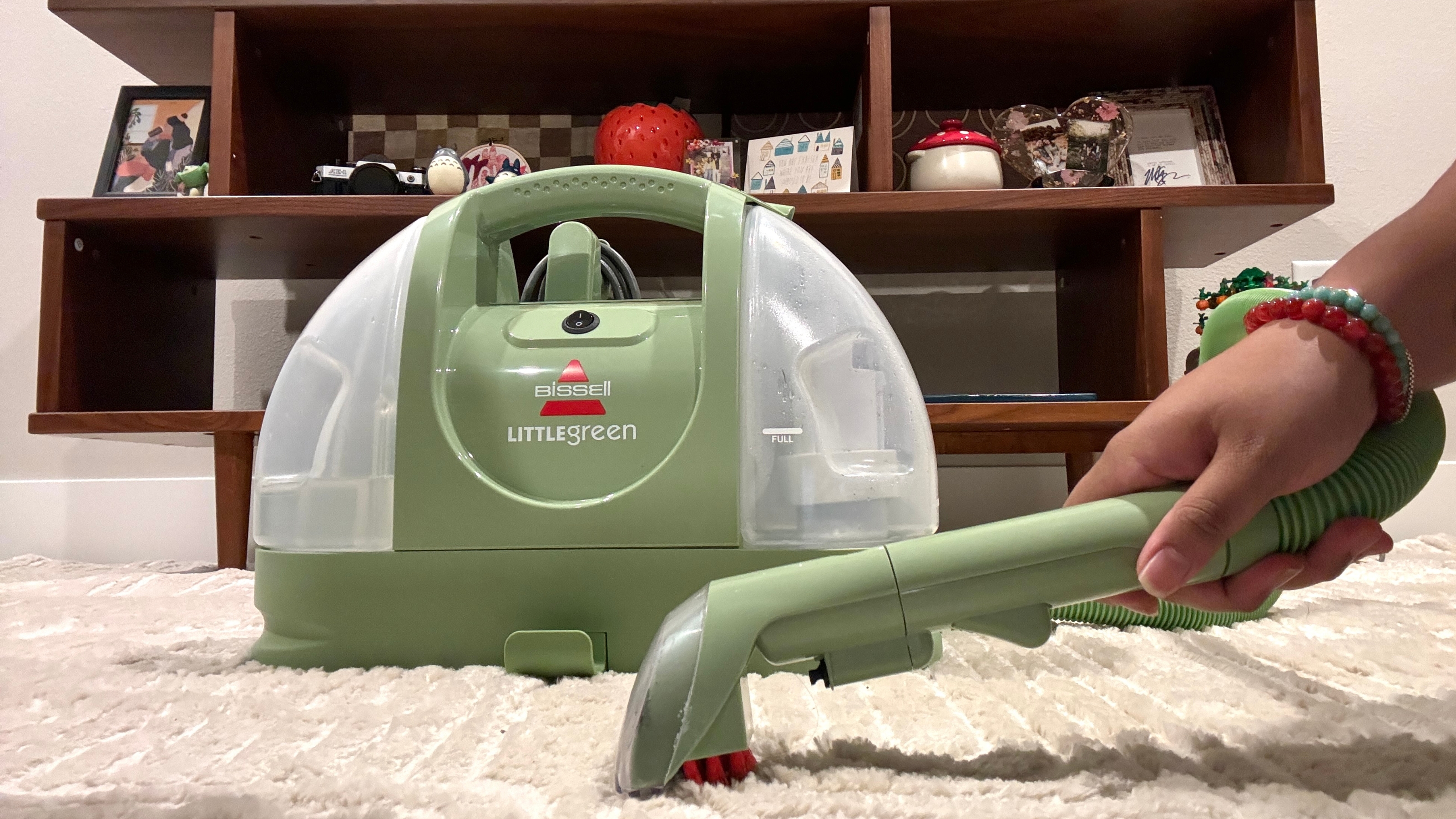
 Bissell Little Green Carpet Cleaner review
Bissell Little Green Carpet Cleaner reviewOur contributing editor tests the Bissell Little Green Carpet Cleaner on upholstered furniture in her townhouse and in her car.
By Aleena Ansari
-
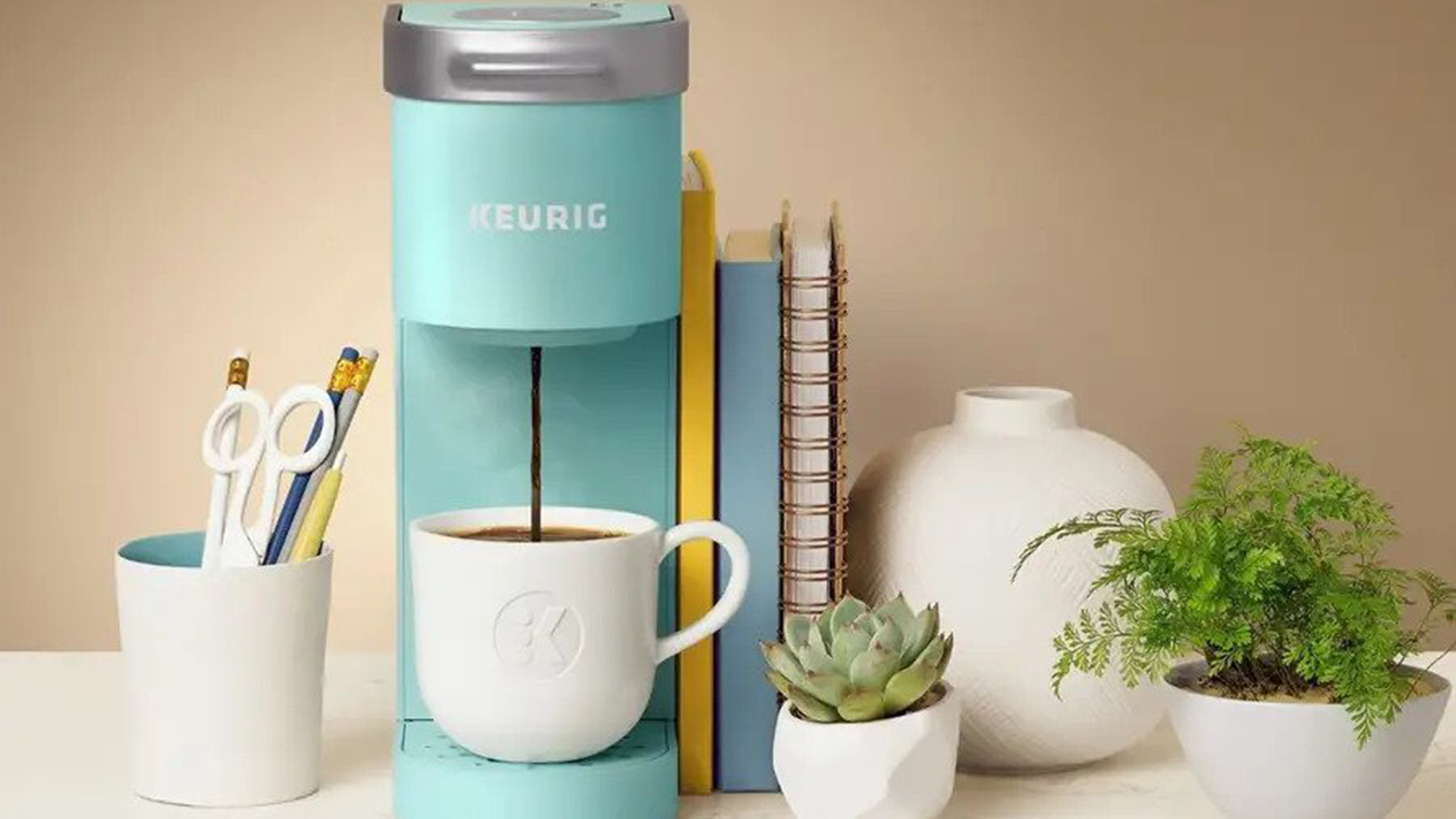 How to clean a Keurig coffee maker — your 4-step guide to ensure the freshest tasting cup of joe
How to clean a Keurig coffee maker — your 4-step guide to ensure the freshest tasting cup of joeCleaning a Keurig coffee maker gets rid of any rancid oils, as well as any chalky calcium build-up
By Christina Chrysostomou
-
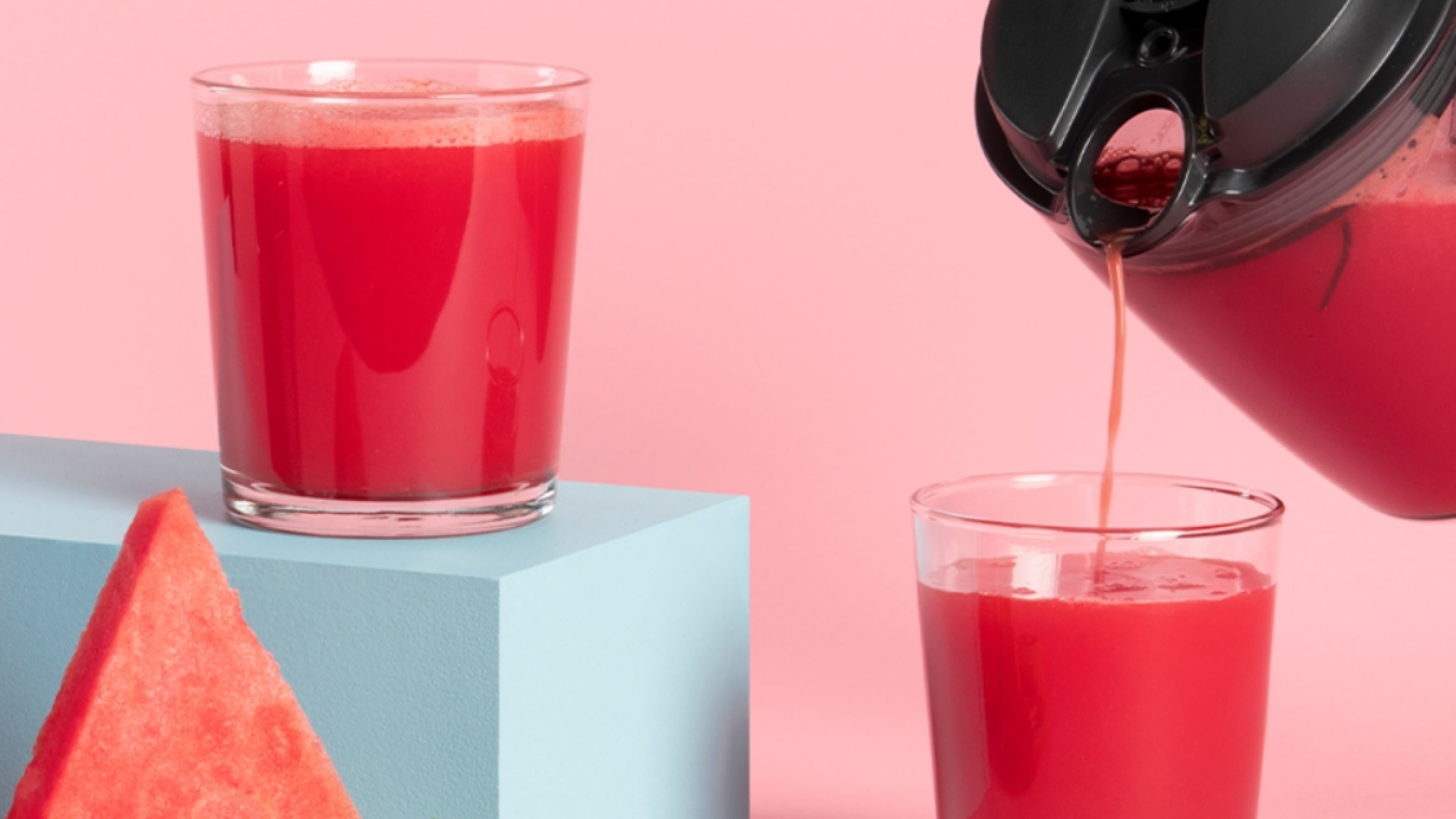 How to clean a juicer — get yourself out of a sticky sitch with our 5-step guide
How to clean a juicer — get yourself out of a sticky sitch with our 5-step guideCleaning a juicer to get rid of carrot, apple, and orange bits couldn't be easier with this guide that'll get it gleaming in 10 minutes
By Christina Chrysostomou
